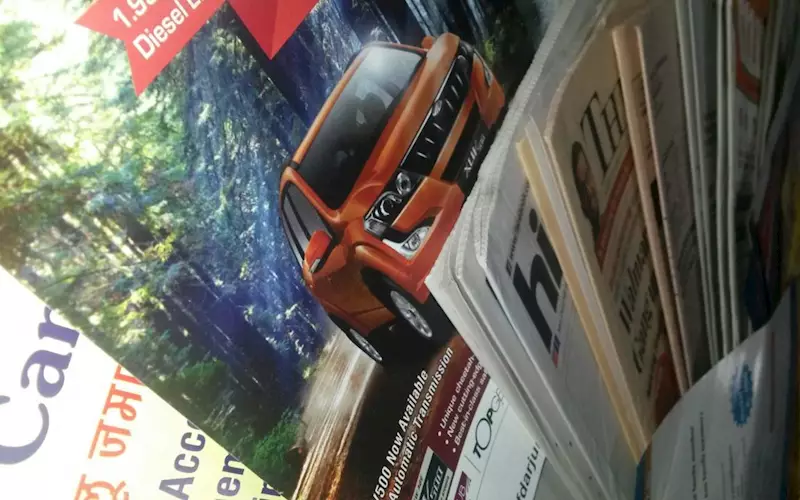Wan-Ifra 2016: Challenges of inserting systems
Inserts or advertisement materials come our way through newspapers during weekends, or ahead of a major festival. Inserts are important sources of revenue for a newspaper, yet they are not a build-in aspect of newspaper publication. How does a newspaper publisher deal with this conundrum? This was the focus of the talk by PK Philip, vice-president, works, Malayala Manorama, during the Wan-Ifra India 2016 Conference, which was held at Kolkata on 21-22 September.
28 Sep 2016 | By Rahul Kumar
“Number of inserts varies each day. It is an occasional activity and it can be achieved both manually and automatically. Both the processes have their advantages and disadvantages,” Philip said.
He said automatic inserting needs big investment and space. ROI is not easy, especially on overseas inserting machines. On the other hand, these machines are faster and guarantee delivery of each insert, plus the quality is good. It enables newspaper houses handle more pages, which may not be possible manually.
On the negative side, it reduces the speed of the press. “Ultimately, you have another rotary machine in your production. If the machine stops, your entire production will suffer,” Philip said.
He added that in the manual process, capital investment is nothing compared to automatic, but it is a time-consuming process. Again, availability of labour, especially in the metro cities, is a pain. Also, there is no guarantee that inserts are delivered exactly.
Philip also explained how demand for inserts rises during special occasions. He said in Kerala, the pagination for Malayala Manorama newspapers goes up to 42 and more during the festive season, especially during Onam.
Ferag, Muller Martini and Technicon are the major players in inserting machines in India.














 See All
See All